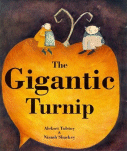
Elephant DanceWritten by: Theresa Heine
Illustrated by: Shiela Moxley
Read Alone: Ages 6-10
Read Together: Ages 4-8
Hardcover; Jacketed; Full-color illustrations; 40pp;
8.75 x 10.5 inches
”Thank God for Granparents!” - this is we, parents usually say whenever our children ask us somethings that only grandparents can answer. i remember when I was a little child, I used to ask questions about how my grandfather lived during World War II and during the Martial Law times (in the Philippines). He would tell me in details exactly and vividly as how he could remember all his experiences both in his community as a leader, a father and an officer of the Philippine Air Force. How I used to like hearing all of his stories and gave me more insights about how he and his family lived during those times. There is nothing like hearing all these memories first-hand - it is a treasure that is passed on from his generation to mine and pretty soon, to my daughter.
This theme of grandfather-grandchild is very evident throughout the day. Ravi, the main character of the story bombards with his grandfather with questions about India. And as I read through the book, I get acquainted about living in India - such as the map of India is shaped like the ear of the elephant (thus, the title of the book is from), the geography of India, the seasons of India - cold weather, dry/hot weather and moonsoon rains -,the religion and their culture.
Speaking of the seasons of India, I like the part when Ravi asked his grandfather if it ever snows in India. This made me laughed as I read this part, because when I was little I also used to wonder, “does it ever rain in other parts of the world?”, “does it ever gets hot across the Pacific?” - and this part of the book reinforces the answers to most of the intriguing questions that children have about the changing seasons of the world. I also like the way the grandfather uses analogy to describe the things that Ravi asks him.
I adore the way the grandfather describes a rainbow in India to Ravi and he said,
“A rainbow in India Ravi beta is seven saris hung across the sky to dry,
red as the watermelon,
orange as lentils,
yellow as saffron,
green as parakeet,
blue as kingfisher,
indigo as the deep ocean,
violet as the storm sky,
before the thunder growls.”
Throughout the book, the grandfather continues to use this similar analogy to explain to Ravi how things are different in India. I think this is a great strategy for children to absorb memories by associating things to things that are familiar to them and things that are colorful and full of live description. In addition to that the grandfather makes sure that the culture of India is also added in how he explains things to Ravi, whether it could be an Indian flower, the Indian Divaali festival, the spices, the food, the himalayans or the clothing, Ravi’s grandfather truly exalts in using these common Indian words.
The book also incorporates a lot of Indian spices. In fact, in the middle of the book, the family of Ravi needed to cook for supper time. This part reflects the Indian family tradition of preparing food and the use of Indian spices such as daal, cloves, cardamom, turmeric, coriander and cumin. Each member of the family is described as having a task to do in preparation of supper. Ravi set the table and his sister Anjali fetched the rice.
The story ends with Ravi going to sleep and before he went to bed, he asked his grandfather, “do you love me grandfather?” and his grandfather used the same strategy of answering this question by saying,
“you are as warm as a newborn kid,
as soft as a frangipani blossom,
as sweet as the juice of the mango
and I love you very much.”
I can also say that this book will be great as gifts to grandparents on their special day and writing a note to them by saying how informative they are to us, in many ways than they could ever think of.
- Alpha










-01-02-2001%5Dgigturnipb1.gif)






No comments:
Post a Comment